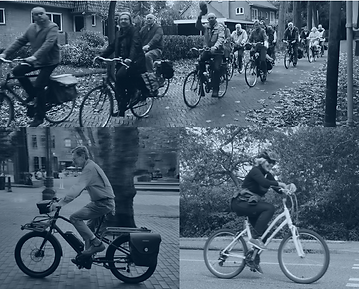
ONLINE JOURNALING
WHAT: Self-report of cycling experiences from a trip, completed online by people from a target group of participants (by personal attribute or geographic area).
WHY: Build an understanding of existing cycling experiences and/or the infrastructure network in your context.
END GOAL: Develop a data-driven narrative (with both data and qualitative information) to make arguments for human-centric street design.

Responding to the online journal after a ride
USE CASES:
-
To learn about the experiences of people in a given community.
-
To identify weaknesses of a cycling network, support ongoing efforts to strengthen it, and gather data to further develop encouragement strategies
-
Use in combination with other methods (e.g. stress mapping, analyzing crash data) to draw inferences.
-
Use to inform maintenance routines so that bicycling facilities remain useful, especially after storms or during construction projects.

Section of sample online journal- template available here
Some methods such as user experience mapping, detailed diaries, and autoethnography allow you to focus on an individual or a small group of people for granular information. This is important because it can provide deep insight, but the depth of these methods is harder to scale up and they are relatively time-consuming for the participant.
In contrast, this pre-structured and online version of journaling can be completed in 10 minutes after a bike ride and provides the researcher data points across a broader sample of participants. Questions can be tailored across contexts or groups of people to meet the researcher’s needs. The journaling method can provide a balance between collecting small-scale personal cycling experiences and larger-scale data on a cycling network or target population as a whole.



Image from Cycling Past 50 report by Carol Kachadoorian
(see presentation slides on online journal here in second half)
Above: Sample journal responses
In one example, practitioner Carol Kachadoorian used the method to gain a better understanding of older adult cyclists’ experiences in the US. A snapshot of her use of the method is above. You can adapt this to a specific target group of people you want to learn about or a specific geographic context (neighborhood, city, etc.).

This open method was developed in collaboration with dblTilde CORE.
You can view updated information on the 50+ Cycling Survey project here. You can participate in Year 5 here.



